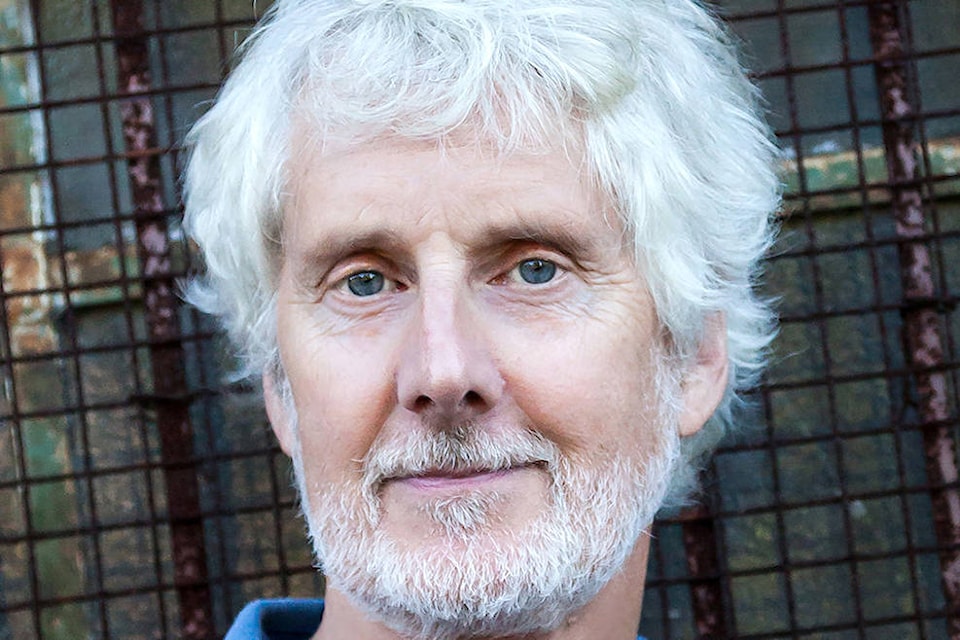In a process he describes as being close to filmmaking, Vancouver author/artist and history enthusiast, Michael Kluckner, uses his drawings to set the scene in his graphic novels.
Kluckner will be at the Salmon Arm library on Saturday, June 30 to discuss two of his historical, graphic books.
Set in Tappen during the Second World War, Toshiko explores the incarceration of 22,000 coastal Japanese Canadians in the B.C. Interior during the 1940s.
The novel is based on the true story of the Calhoun Farm where the Nagata family lived along with their relatives, the Fukuharas and Konishis.
Kluckner explains that some Japanese Canadian families from Main Island and Vancouver obtained permits to live independently rather than move to internment camps and built several little cabins on land in the Skimikin area.
���߲��о����The Calhouns on Carlin Road invited them to set up their cabins on his farm,���߲��о���� he says, noting in the early 200s he met a number of Japanese Canadians who had lived in the Shuswap during the war, including some who were born on the farm. ���߲��о����Some lived and worked on the farm during the war and stayed on into the early 1950s.���߲��о����
In Toshiko, we meet a Japanese teenager from Vancouver, who is exiled to Tappen with her family and falls in love with a local lad at a time when racial descrimination was actually legislated.
���߲��о����The reader of the story can find out all sorts of things about racial laws, without fingerpointing (on my part),���߲��о���� Kluckner says, noting his interest in providing historical background and illustrating novels with his own pencil drawings.
���߲��о����There���߲��о����s lots of interest in more visual stories,���߲��о���� he says. ���߲��о����There is a huge number of people who are not English speakers who will be able to get more out of graphic novels than from a narrative book, although you lose the beautiful literary English.���߲��о����
Kluckner says the idea for the story was sparked by a radio show he did with Mark Forsythe for CBC Almanac in 2001 in which people from across B.C. phoned in to share places in the province that were important to them.
���߲��о����One young person called in from a family who had been on the farm and I got in touch with her,���߲��о���� he says. ���߲��о����Her mother had been born there in 1944.���߲��о����
Kluckner was well-qualified to set his novel in the Shuswap having spent childhood summers in a family cabin at Pierre���߲��о����s Point.
���߲��о����We had lovely summers there,���߲��о���� he says. ���߲��о����We���߲��о����d be there right through until Labour Day. Dad came on the weekend; he���߲��о����d come on the overnight train from Vancouver.���߲��о����
At his illustrated talk at the Salmon Arm libray, Kluckner will also focus on his new graphic biography of Julia Henshaw, a writer and botanist who won the Croix de guerre for ambulance driving on the Western Front 100 years ago.
���߲��о����She and her cohorts were working through the French Red Cross, evacuating civilians as the Germans approached laying waste to the villages,���߲��о���� he says. ���߲��о����They managed to save hundreds of lives.���߲��о����
Julia was English but moved to Montreal as a teenager, then settled in Vancouver with her husband in 1890. Her second novel, Why Not, Sweetheart? was published in 1901 and takes place largely in the Kootenays. She also wrote the first guidebook to the botany of the Canadian Rockies and was an independent working writer with a weekly column in one of the Vancouver newspapers.
Kluckner says he was fascinated by Henshaw, her values and ability to make her own way at a time when few women were working outside the home.
He is also a firm believer in the notion that if lessons are not learned, history will repeat itself.
���߲��о����At the time I was doing Toshiko, the federal (Conservative) government was running for government and there was racial profiling of Muslim women particularly. It was a real echo of what was happening to the Japanese at the start of the war.���߲��о����
As well as capturing history in his books, Kluckner paints or draws abandoned landscapes. During his 20s, he did illustrations for the Vancouver Sun and was a political cartoonist for the Vancouver Province and the Victoria Times.
Following the 1982 recession, Kluckner switched to writing serious history books that he illustrated with his own watercolour paintings.
barbbrouwer@saobserver.net
Like us on and follow us on



